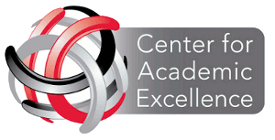Twelve Tips for Improving the Effectiveness of Computer-Assisted Instruction
Location
Dolan School of Business
Start Date
29-5-2014 5:00 PM
End Date
29-5-2014 6:15 PM
Session Type
Poster Presentation
Description
The use of educational technology has a long history in medical education (Ellaway & Masters 2008). The use of web-based learning environments and tools has become pretty much de rigueur in many if not most medical schools today, but often with limited benefit to learners (Cook, 2009). The problem stems, we argue, from only asking, “What works?” and therefore relying on decontextualized evidence to inform the use of technology in complex educational environments. We should instead, we argue, follow the realist mantra of asking, “What works in this context with these learners at this time?” (Wong, Greenhalgh, Westhorp, & Pawson, 2012). Although our research is based on medical education, we believe that our conclusions are applicable to a broad spectrum of teaching and learning. These twelve tips represent a series of principles for the effective implementation (rather than design) of computer-assisted instructional materials.
12 Tips:
- Match CAI difficulty to your learners’ developmental level
- Minimize extraneous features that can inhibit learning
- Balance interactivity with cognitive load
- Provide rich feedback and guidance
- Maximize learner control and agency in using CAI
- Use CAI to enhance learning around as well as within it
- Clearly define and communicate the reasons for using CAI
- Integrate and make space for the CAI in the curriculum
- Be explicit about how using CAI relates to assessment
- Address faculty motives and perceptions
- Identify and mitigate issues that may diminish the effectiveness of using CAI
- Engage in quality monitoring and improvement
Topic Designation
Teaching & Learning, Technology
Presenter Bio(s)
Steve Yavner
Adjunct Professor
Department of Communication and Department of Visual and Performing Arts Program in Film, Television, and Media Arts
Fairfield University
PhD Candidate
Department of Administration, Leadership, & Technology Program in Educational Communication & Technology
NYU/Steinhardt
Research Assistant
Division of Educational Informatics
NYU School of Medicine/NYU-Langone Medical Center
Twelve Tips for Improving the Effectiveness of Computer-Assisted Instruction
Dolan School of Business
The use of educational technology has a long history in medical education (Ellaway & Masters 2008). The use of web-based learning environments and tools has become pretty much de rigueur in many if not most medical schools today, but often with limited benefit to learners (Cook, 2009). The problem stems, we argue, from only asking, “What works?” and therefore relying on decontextualized evidence to inform the use of technology in complex educational environments. We should instead, we argue, follow the realist mantra of asking, “What works in this context with these learners at this time?” (Wong, Greenhalgh, Westhorp, & Pawson, 2012). Although our research is based on medical education, we believe that our conclusions are applicable to a broad spectrum of teaching and learning. These twelve tips represent a series of principles for the effective implementation (rather than design) of computer-assisted instructional materials.
12 Tips:
- Match CAI difficulty to your learners’ developmental level
- Minimize extraneous features that can inhibit learning
- Balance interactivity with cognitive load
- Provide rich feedback and guidance
- Maximize learner control and agency in using CAI
- Use CAI to enhance learning around as well as within it
- Clearly define and communicate the reasons for using CAI
- Integrate and make space for the CAI in the curriculum
- Be explicit about how using CAI relates to assessment
- Address faculty motives and perceptions
- Identify and mitigate issues that may diminish the effectiveness of using CAI
- Engage in quality monitoring and improvement


